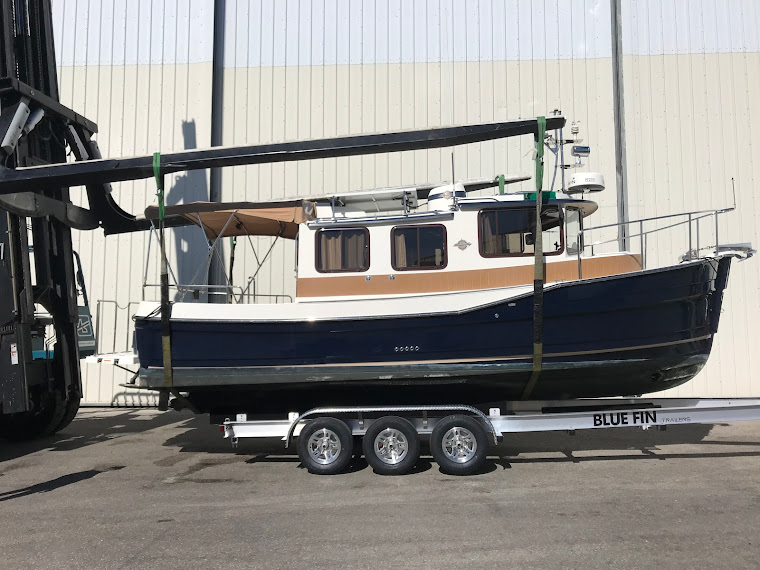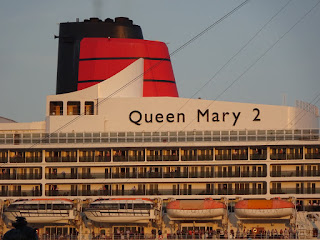Halifax
Finding
our dock in front of the Atlantic Maritime Museum was easy – just next to the
big blue and white HMCS Sackville – a WWII escort ship. Getting on the dock was a little trickier but
accomplished in the tight quarters with the help of Don on Spring Days. Don and Lili
are fellow Americans cruising the world on their 70+ foot Nordhaven. Since they came up the way we are going back,
they graciously shared their ideas on where to stop as well as what to do in
Halifax. Once again the community of
boaters provided support.
We
were on their fly bridge when the Queen
Mary 2 departed making a turn in front of the docks. While Spring Days dwarfs Erben Renewal, The Queen Mary
2 dwarfed the entire waterfront. A
most impressive ship which we learned more about in the museum with its Cunard
exhibit. Samuel Cunard was a Halifax
native.
Sadly
the reason our paths crossed with the big ship was due to a tragedy on board –
they were delayed because a crew member had fallen overboard off of New Found
land. They passed us on our way into Halifax and left the same evening. We were
happy to enjoy more than a few hours on shore.
Like
many downtown boating locations, the dock here is not a marina as much as a
place to tie up the boat with power. Thankfully we don’t need off boat
amenities and have enjoyed our boardwalk location and the Maritime Museum. Roving
acts, from bag pipers or fiddlers to puppeteers, provided free entertainment. We also caught the Tunes on Tuesdays concert
of Cape Breton Music in the Museum courtyard. Wandering the shops and food
stands along the extensive harbor walk added to the fun. Fortunately all the excitement
when to bed with the sun making for peaceful sleep – punctuated by the occasional
fog horn.
As
recommended by fellow boaters, we started our Halifax stay with a walking tour –
Evelyn, our guide, met us at the Citadel – with a view of the city and wound us
down through the streets back to the waterfront. Along the way we also visited
St Paul’s – the oldest building – although it has been expanded several times,
the core dates from 1750. Our tour covered many of the interesting shop and pub
signs that decorate Halifax.
On
a foggy morning we returned to the Citadel for a tour led by a costumed
re-en-actor. One of the best summer jobs
in Halifax for the local university students is at the Citadel. Troops of actors perform the duties of the
fort in a variety of costumes depicting the forces that occupied the garrison
during its 200 year history. Although
the best view of the city can be had from this perch, unfortunately our second
visit gave a better picture of the typical foggy weather rather than island
forts in the harbor. The impressive fortifications were once again built by the
British after the War of 1812. And, like the one we saw in Kingston, it has
never been attacked.
On
our way up and down the Citadel hill we passed the clock tower – built in 1803
to keep the soldiers on schedule – sort of.
The clock was running 5 minutes fast when we were there.
The
military museum in the Citadel held a few intriguing items. The souvenir belts were covered with insignia
collected by soldiers – either traded or in memory of fallen comrades. There was some interesting trench art and a
display on the poem “In Flanders Field”.
This well-known poem was written by a Canadian officer, John McCrae, –
set to music by Sousa and appropriated for war poster propaganda. Today it
endures as part of the red poppy Remembrance Day tradition.
A
stroll through the Victorian Public Garden… eye candy



































































































No comments:
Post a Comment